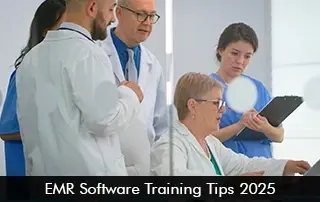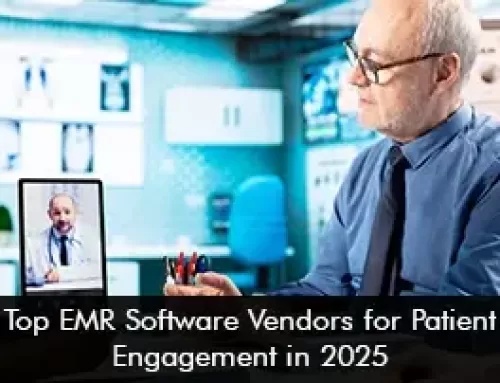Electronic Medical Records (EMR) Software has been widely deployed by healthcare organizations to streamline workflows and enhance patient care. The technology, however, can lead to physician burnout if the right training and education are not offered. To enhance the EMR Software user experience, training is the cornerstone. This blog will explore different EHR System training methods that can not only keep clinician burnout at bay but also make clinicians feel empowered to offer high-quality patient care.
Why is EMR Software Training Important for Practice Success?
In the healthcare sector, EHR software training is essential for several reasons. First, it guarantees that medical providers can use the software system effectively, simplifying their workflow and reducing mistakes.
Appropriate training for the EMR System guarantees adherence to legal requirements, like HIPAA, protecting patient privacy and data security. Furthermore, effective EMR software use improves teamwork and communication across healthcare organizations, improving patient outcomes and care.
Comprehensive electronic medical records software training empowers users to use the system to its full advantage and finish tasks quickly. Through effective training, the providers don’t see the software as an added burden, but as a tool that can assist them in improving healthcare delivery.
EMR Software Training Best Practices 2025
So what are the best EHR Software training practices this year that can boost provider satisfaction and eliminate burnout?
Training ensures that electronic medical records software technology can be utilized to its full potential. Providers can feel comfortable with the EMR System just like they are with their smartphones, with the best training programs.
Virtual Reality Simulations
Virtual reality for Electronic Medical Records (EMR) Software training is like learning the EHR System, resembling a video game. Staff members can wear VR headsets that make them enter a made-up hospital or clinic setting. This helps them to practice maneuvering the EMR Software; for example, they can schedule appointments, use the software dashboard, and enter patient notes. This is a hands-on training method where staff members can gain confidence in using the software system without having to worry about making mistakes.
Specialty-Specific EMR Software Training
These training programs, as the name suggests, are designed to meet the unique requirements of medical specialties. Specialty-specific EMR Software training probes deeper into features, processes, and documentation procedures specific to a particular medical specialty than generic software training, which offers a general overview of the software’s capability.
Specialties like cardiology, cancer, or pediatrics, for instance, might have different terminology, workflows, and documentation requirements than general practice. For example, at the University of Wisconsin’s ICEP program, there’s an Epic EMR Software course tagged as MD201 – Power User Introduction. It basically teaches doctors how to make the Epic System work efficiently for them. This is achieved by customizing their note templates and placing orders more quickly, using built-in reports that show where they can save time, and even tailoring the system to match their specialty.
E-Learning Modules for Electronic Health Records Software
Working remotely works well for many professions, and so do virtual or E-learning training modules for EMR Software. The e-learning modules are available remotely and can allow providers to educate themselves at their own pace and convenience. It gives them the accessibility and flexibility to utilize educational training programs when they want. This training method is cost-effective and hassle-free and offered by athenahealth EMR Software. Software updates and modifications can be readily included in e-learning EHR Software training, giving users constant access to the most recent and pertinent information.
EMR Software Training Success
Getting EHR Software training is not a one-time process, but an ongoing drill to ensure that clinicians, nurses, staff members, and billers get the most out of the Electronic Health Records Software. A modern and well-rounded EMR System training program is a mix of blended learning, including remote modules, in-person training, and VR simulations. This learning methodology trains staff members to become super users of EMR Software technology, enhancing their user experience and daily efficiency.







